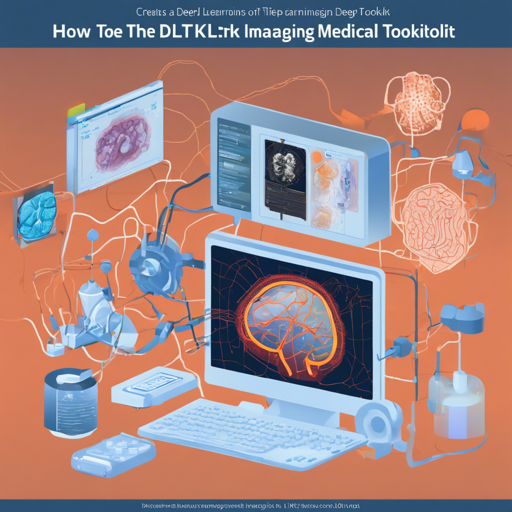The Deep Learning Toolkit (DLTK) is a powerful neural network framework designed specifically for medical imaging. Built on TensorFlow, DLTK enables swift development and is particularly useful for researchers looking to prototype and analyze medical images. This guide will lead you through the installation and initial usage of DLTK.
What Makes DLTK Stand Out?
- Designed for fast prototyping with a low entry barrier.
- Supports reproducibility in image analysis applications.
- Offers a wealth of models and methods to facilitate research in the field.
Installation Instructions
To get started with DLTK, follow these steps:
1. Set Up a Virtual Environment
First, create a virtual environment to isolate your DLTK installation:
virtualenv -p python3 --always-copy venv_tf
source venv_tf/bin/activate2. Install TensorFlow
Next, install TensorFlow with GPU support by executing:
pip install tensorflow-gpu==1.4.03. Install DLTK
You have two options to install DLTK:
- From PyPI:
pip install dltkcd MY_WORKSPACE_DIRECTORY
git clone https://github.com/DLTK/DLTK.git
cd DLTK
pip install -e .Getting Started with DLTK
1. Download Example Data
Navigate to the data/IXI_HH directory and download the IXI HH dataset using:
python download_IXI_HH.py2. Run Tutorial Notebooks
DLTK includes tutorial notebooks to guide you through various functionalities:
Launch a Jupyter notebook server for interaction:
cd MY_WORKSPACE_DIRECTORY/DLTK
jupyter notebook --ip=* --port MY_PORTOpen your browser and go to http://localhost:MY_PORT to find the notebooks!
Understand DLTK’s Functionality with an Analogy
Think of DLTK as an artist’s toolkit for painting a masterpiece in the realm of medical imaging. Each tool within DLTK—be it a brush, palette, or canvas—represents a different function or model. An artist (user) can select specific tools to design their unique artwork (medical image analysis). Just as an artist combines colors and techniques to produce a finished painting, researchers can blend various algorithms and methods offered in DLTK to craft tailored solutions for their imaging challenges.
Troubleshooting
When using DLTK, you might encounter a few hurdles. Here are some troubleshooting tips:
- Ensure you are using Python 3, as future releases will not support Python 2.7.
- If your TensorFlow installation fails, check if your GPU drivers are updated.
- For issues with Jupyter notebook, make sure the kernel is set correctly for the virtual environment.
- When needing help, refer to the DLTK Issues page for common problems.
- For more insights, updates, or to collaborate on AI development projects, stay connected with fxis.ai.
At fxis.ai, we believe that such advancements are crucial for the future of AI, as they enable more comprehensive and effective solutions. Our team is continually exploring new methodologies to push the envelope in artificial intelligence, ensuring that our clients benefit from the latest technological innovations.
Conclusion
With the DLTK framework, you have all the resources at your fingertips to embark on your medical imaging research. From installation to running your first model, everything is well-guided, opening doors to cutting-edge advancements in the field.

